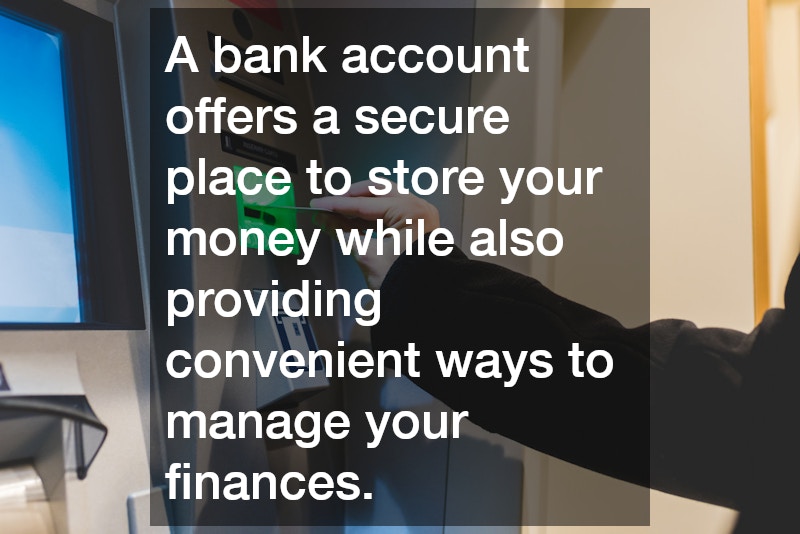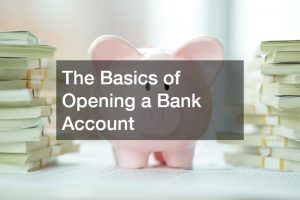
Opening a bank account is one of the first steps in managing your finances and establishing financial independence. Whether you’re opening your first account or looking for a new banking option, understanding the basics will help you make informed decisions. A bank account allows you to safely deposit money, pay bills, and manage your expenses, all while providing easy access to your funds. If you’re ready to open a checking account, here’s everything you need to know to get started.
Why Open a Bank Account?
A bank account offers a secure place to store your money while also providing convenient ways to manage your finances. There are many reasons to open a checking account or a savings account, including:
Security: Banks provide a safe place to keep your money, protecting it from theft or loss.
Convenience: Bank accounts make it easy to pay bills, deposit checks, and transfer funds electronically.
Tracking: A bank account helps you monitor your spending, track expenses, and stick to a budget.
Access to financial tools: Most banks offer a variety of financial services, such as mobile banking, debit cards, online bill pay, and direct deposit.
Types of Bank Accounts
Before you open a checking account or another type of bank account, it’s essential to understand the different options available:
Checking Account: A checking account is designed for everyday transactions. It allows you to deposit and withdraw money, write checks, and use a debit card for purchases. Checking accounts are best for managing your daily expenses, such as paying bills, groceries, and other living costs. Many people choose to open a checking account as their primary banking option because of the ease of access to their money.
Savings Account: A savings account is intended for storing money that you don’t need to access regularly. Savings accounts typically offer interest on the balance, helping your money grow over time. They’re ideal for building an emergency fund or saving for future goals.
Money Market Account: A money market account combines features of both checking and savings accounts. It offers higher interest rates than regular checking accounts while allowing limited check-writing privileges and debit card access.
Certificate of Deposit (CD): A CD is a type of savings account that holds a fixed amount of money for a specified period, usually with a higher interest rate than traditional savings accounts. The funds in a CD are locked until the maturity date, making it a better option for long-term savings.
What You Need to Open a Checking Account
When you’re ready to open a checking account, you’ll need to gather some basic information and documents. Here’s a list of what you’ll typically need:
Personal Information: You’ll need to provide your full name, address, phone number, email, and Social Security number (or Taxpayer Identification Number for non-U.S. citizens). Some banks may also ask for your employment information.
Identification: Banks require valid identification to verify your identity. You’ll need to present a government-issued ID, such as a driver’s license, passport, or state-issued identification card.
Initial Deposit: Some banks require an initial deposit to open an account. This amount varies depending on the bank and account type, but it’s usually a nominal amount (around $25 to $100). Be sure to check the bank’s requirements before opening an account.
Proof of Address: Banks may require proof of your address, such as a utility bill, lease agreement, or another document showing your name and current address.
Steps to Open a Checking Account
Once you have the necessary information and documents, you can follow these simple steps to open a checking account:
Choose a Bank: Research different banks and compare their account options, fees, and benefits. Some banks offer free checking accounts, while others may charge monthly maintenance fees unless certain conditions are met (e.g., maintaining a minimum balance). Look for a bank that offers convenient services like online banking, mobile banking, and access to ATMs.
Complete the Application: You can usually open a checking account either in person at a branch or online through the bank’s website. The application will require you to provide your personal information, identification, and initial deposit.
Deposit Funds: If the bank requires an initial deposit, you can fund the account by transferring money from another account, using cash, or writing a check.
Set Up Online Banking: Once your account is open, set up online and mobile banking to manage your account more efficiently. This will allow you to view your balance, transfer funds, pay bills, and monitor transactions from your computer or smartphone.
Opening a bank account is a straightforward process that provides numerous financial benefits. Whether you’re looking to open a checking account for everyday use or a savings account to build your financial security, understanding the types of accounts and the steps involved will help you choose the right option for your needs. By selecting the right bank and managing your account responsibly, you can take control of your finances and achieve your financial goals.
.



